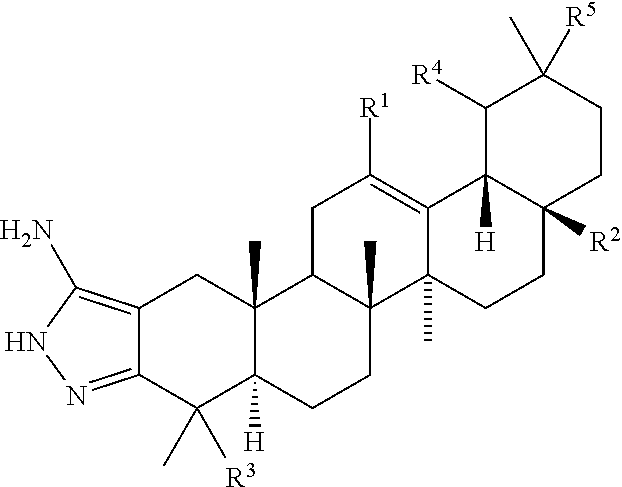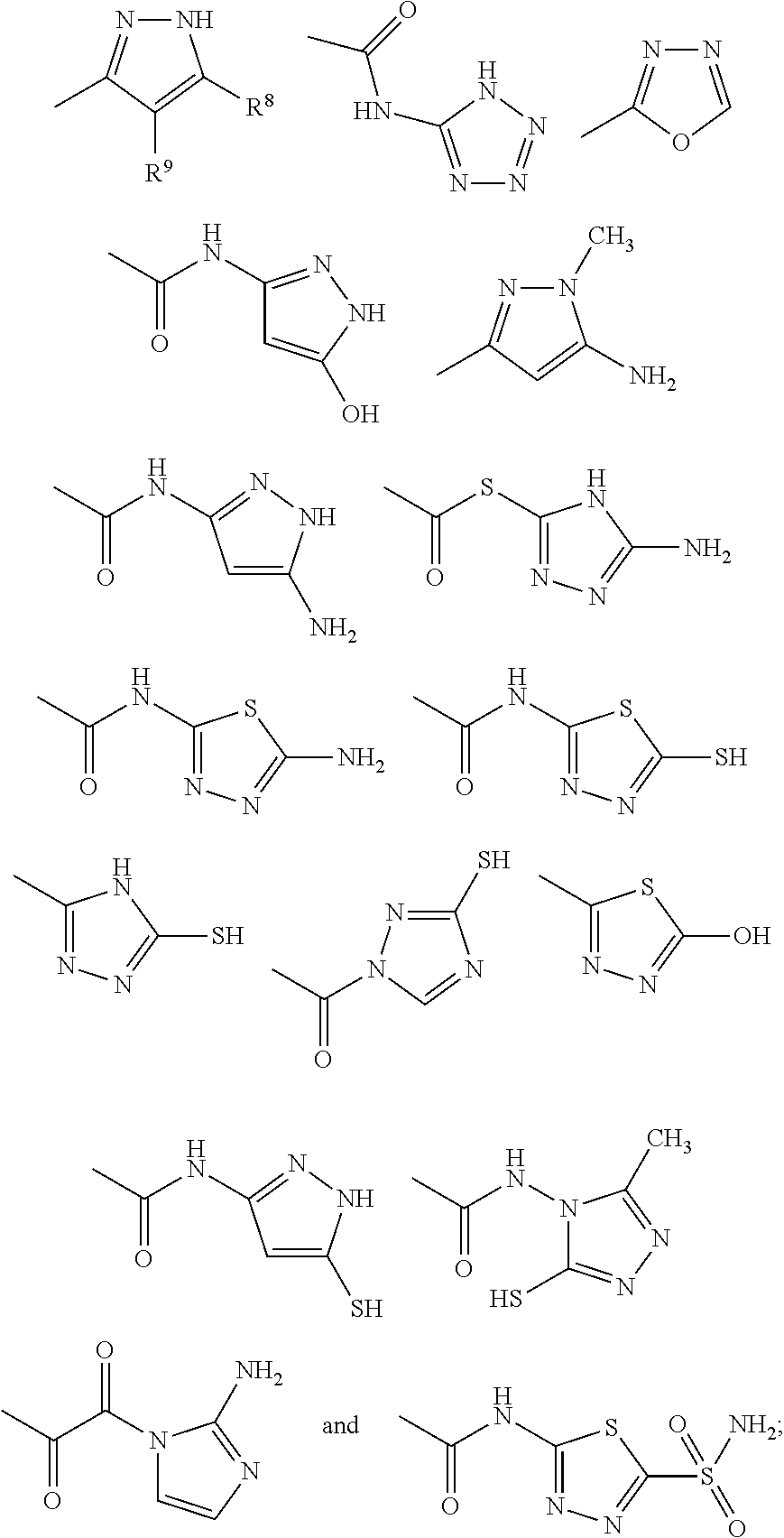Inhibitors of bacterial biofilms and related methods
- Summary
- Abstract
- Description
- Claims
- Application Information
AI Technical Summary
Benefits of technology
Problems solved by technology
Method used
Image
Examples
example i
Specificity of the Biofilm Growth Assay
[0122]Table 1, below, shows experimental results illustrating remarkable properties of Compound 1 to inhibit the spreading of clinical isolates of P. aeruginosa and E. coli biofilms as determined in a biofilm growth assay. The related scaffolds and analogs shown in Table 1 have been found to exhibit significantly less inhibitory activities than does Compound 1 in the biofilm growth assay even though certain of the compounds consist of chemical structures similar to that of Compound 1. These data demonstrate the novel and unique aspects of Compound 1 and its discovery and the specificity of the biofilm growth assay to identify Compound 1 as a potent inhibitor of spreading gram-negative bacterial biofilms.
[0123]The biofilm growth assay was carried out to measure swarming or biofilm spreading on semi-solid agar media in round plates (for example, 100×15 mm), also referred to as Petri dishes. For E. coli, the plates contained LB medium with 0.6% ag...
example ii
[0126]All of the compounds shown in Tables 2, 3, 4, and 5, below, were prepared semi-synthetically from oleanolic acid, except for Compounds 2 and 3. Compound 2 was prepared from ursolic acid. Compound 3 was prepared from hederagenin, but could also be prepared from an oleanolic acid analog with a hydroxyl at C23 or C24. These compounds were tested in the spreading biofilm assay according to the methods detailed in Example I, above. The values shown in Tables 2, 3, 4, and 5 are the concentrations of compounds tested in the biofilm growth assay that reduce the area of the spreading biofilm compared to negative controls by greater than or equal to 85%.
[0127]
TABLE 2Compound 1 and its Analogs and their inhibitory concentrations in the biofilmgrowth assay as detailed in Example I, aboveCOMPOUNDChemical Structure(μg / ml)(μg / ml)10.5120.5130.5140.25150.5160.1250.2570.25180.25190.5110 0.5111 0.50.512 0.51
[0128]
TABLE 3Analogs of Compound 1Chemical Structure COM- POUNDP.aerugi-nosa (μg...
example iii
Semi-Synthesis Procedures for the Compounds Shown in Example II
[0131]Preparative HPLC: Preparative HPLC was conducted using a SunFire Prep C18 OBD Column, 5 μm, 19×100 mm eluting with a gradient from 90:10 (water:acetonitrile, both with 0.05% trifluoroacetic acid) to 10:90 (water:acetonitrile, both with 0.05% trifluoroacetic acid) over 14 minutes followed by a 2 minute hold at 10:90 (water:acetonitrile, both with 0.05% trifluoroacetic acid) with a flow rate at 25 mL / min.
[0132]CMA: CMA=80:18:2 Methylene Chloride / Methanol / concentrated Ammonium Hydroxide
Preparation of Common Intermediate I
[0133]
(i) Preparation of Ib: (4aS,6aS,6bR,12aR)-2,2,6a,6b,9,9,12a-Heptamethyl-10-oxo-1,2,3,4,4a,5,6,6a,6b,7,8,8a,9,10,11,12,12a,12b,13,14b-icosahydropicene-4-a-carboxylic acid
[0134]To a mixture of oleanolic acid (Ia, 5.0 g, 10.9 mmol) and CH2Cl2 (200 mL) was added the Dess-Martin reagent (6.0 g, 14.2 mmol) under nitrogen at room temperature. After stirring at room temperature for 1 hour, the starting ...
PUM
| Property | Measurement | Unit |
|---|---|---|
| Volume | aaaaa | aaaaa |
| Volume | aaaaa | aaaaa |
| Volume | aaaaa | aaaaa |
Abstract
Description
Claims
Application Information
 Login to View More
Login to View More - R&D
- Intellectual Property
- Life Sciences
- Materials
- Tech Scout
- Unparalleled Data Quality
- Higher Quality Content
- 60% Fewer Hallucinations
Browse by: Latest US Patents, China's latest patents, Technical Efficacy Thesaurus, Application Domain, Technology Topic, Popular Technical Reports.
© 2025 PatSnap. All rights reserved.Legal|Privacy policy|Modern Slavery Act Transparency Statement|Sitemap|About US| Contact US: help@patsnap.com



